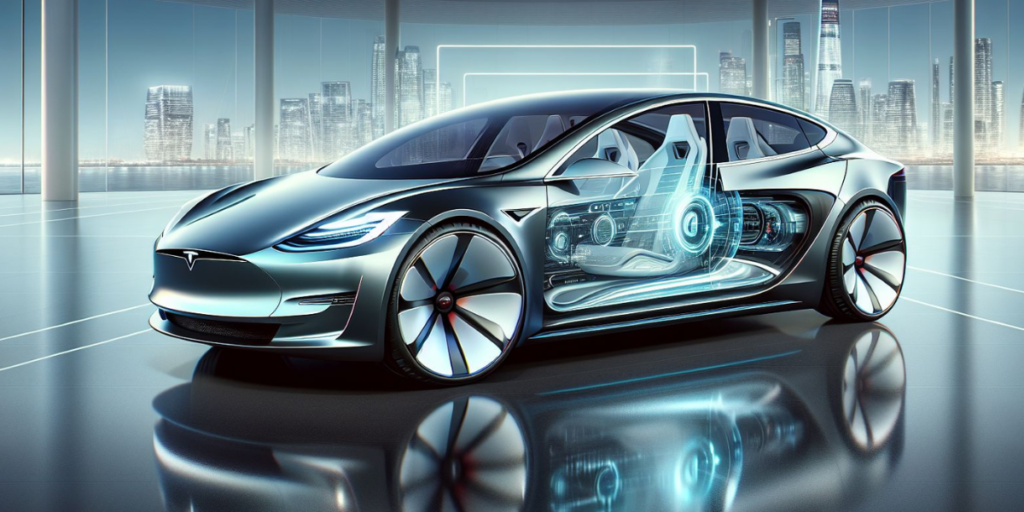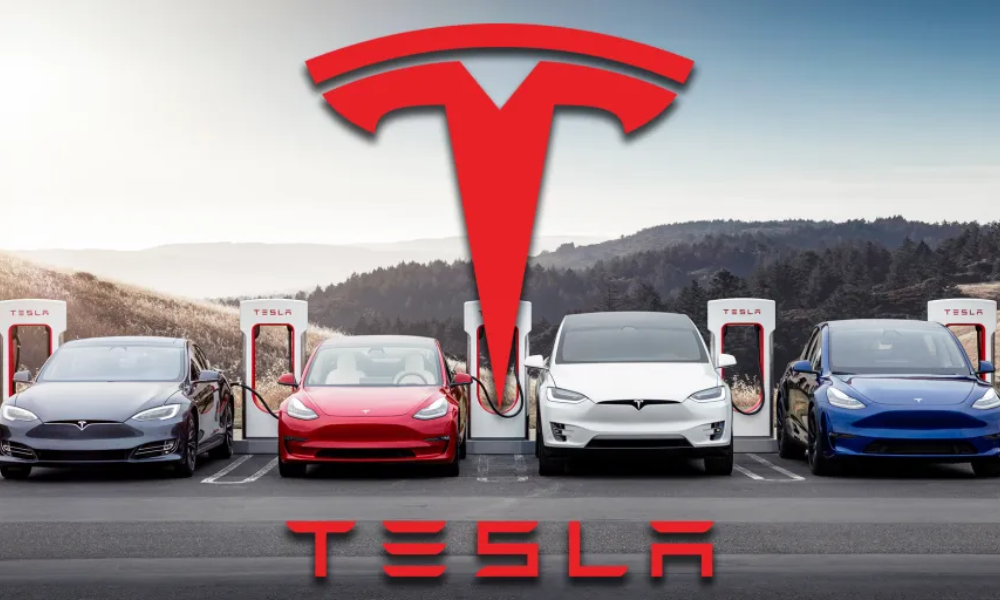Billionaire and Tesla CEO Elon Musk is preparing to unveil a new electric vehicle model that not only promises to serve as the foundation for his future fleet of autonomous taxis, known as Robotaxis, but also aims to capture significant attention. Musk made the announcement on the evening of the 10th during a widely publicized and high-profile event. This announcement is a key part of his broader strategy to attract the interest of both investors and Tesla fans alike. Consequently, this move is expected to positively influence Tesla’s stock value, which has remained remarkably stable despite the ongoing decline in electric vehicle sales.
The prospect of Robotaxis has become one of Musk’s most exciting and ambitious ventures. The idea of transforming the taxi industry with fully autonomous vehicles has the potential to revolutionize the way we think about transportation. However, while the concept of Robotaxis is exhilarating, Tesla faces numerous challenges that may delay its plans for widespread deployment.
Challenges Facing Tesla in the Race for Robotaxis
While Tesla remains at the forefront of innovation in electric vehicles, significant concerns persist about its future in autonomous driving. The company’s lack of publicly available information on its autonomous driving tests, along with ongoing issues with its Autopilot and Full Self-Driving (FSD) software, has raised numerous questions among regulators, experts, and consumers. Despite Musk’s optimistic predictions, the road to fully autonomous Robotaxis may be more complicated than anticipated.
Safety incidents and investigations into the reliability of Tesla’s driver assistance systems have compounded these concerns. The National Highway Traffic Safety Administration (NHTSA) is closely scrutinizing Tesla due to several crashes and traffic violations linked to its partially automated software. These incidents have raised alarms about the safety of Tesla’s Robotaxis technology and whether the company’s vehicles can meet the stringent requirements for full autonomy.

As regulatory bodies tighten their scrutiny and competitors advance their technologies, Tesla faces immense pressure to prove the safety and effectiveness of its software. Achieving Musk’s ambitious vision of fully autonomous Robotaxis may prove far more difficult than expected. With the bar set high for autonomous vehicle safety, Tesla will need to overcome a series of technological and regulatory hurdles before its Robotaxis can become a common sight on the streets.
Waymo’s Dominance in the Robotaxi Market
While Tesla’s Robotaxis are still a work in progress, Waymo, a pioneer in self-driving technology, currently runs the program showing the most promise. Although Waymo’s robotaxi service has yet to turn a profit, it is already handling over 100,000 paid rides per week in cities like Phoenix, San Francisco, and Los Angeles. Waymo’s service has become a key player in the autonomous taxi industry, offering a glimpse of what the future might look like for Robotaxis.
Waymo’s Robotaxis program stands out because of its rigorous approach to testing and development. The company has spent years perfecting its autonomous technology and gathering valuable data from urban environments. This has allowed Waymo to create a fleet of Robotaxis that operate with a high level of safety and reliability. Furthermore, Waymo has plans to expand its service to new markets, including Austin and Atlanta, which could further increase its reach.
One of the most important factors that differentiate Waymo from Tesla’s Robotaxis is its focus on safety and regulatory approval. While Tesla’s Robotaxis are still in development, Waymo has already achieved significant milestones in ensuring the safety of its autonomous vehicles. The company has worked closely with regulators to meet the necessary safety standards, making it a leader in the autonomous driving space.
Comparing Tesla’s Robotaxis with Competitors: The Safety Debate
When it comes to autonomous taxis, Waymo currently holds the lead, but Tesla’s Robotaxis are expected to offer fierce competition. Waymo’s vehicles, while not without flaws, have managed to avoid the serious accidents that have plagued other competitors like Uber and Cruise. For instance, while Waymo’s Robotaxis operate safely and without major incidents, Tesla is currently under investigation by the NHTSA due to several crashes and traffic violations linked to its partially automated software. This situation raises concerns about Tesla’s technology compared to Waymo’s, especially when it comes to the safety and reliability of Robotaxis.
The challenge for Tesla will be overcoming its safety issues and proving to regulators and the public that its Robotaxis can operate as safely as Waymo’s. Despite Tesla’s bold ambitions, the company’s technology still faces significant hurdles that could delay the rollout of its Robotaxi service.
The Economic Potential of Robotaxis: A $50 Billion Industry by 2030?
The market for Robotaxis is projected to grow rapidly over the next decade. A recent report by Raymond James predicts that the Robotaxi market could reach an annual value of up to $50 billion by 2030. This represents a huge opportunity for companies like Tesla and Waymo, as the demand for autonomous taxis grows in major cities across the world.
Waymo expects its revenue from Robotaxis to surpass $50 million this year, with projections suggesting it could approach $100 million as the service expands. This is a clear indicator of the growing interest in autonomous taxis and the potential for these vehicles to disrupt the traditional transportation industry. As cities look for more sustainable and efficient transportation solutions, the rise of Robotaxis could be the answer.
Tesla, on the other hand, has yet to fully deploy its Robotaxis fleet. However, Musk’s bold vision for autonomous vehicles could help propel the company to new heights if Tesla can overcome the technological and regulatory challenges. While Tesla’s Robotaxis are not yet available to the public, Musk has promised that they will eventually be a significant part of the company’s growth strategy.
The Future of Robotaxis: Musk’s Ambition and the Path Forward
The future of Robotaxis is undoubtedly exciting, but it remains unclear when these vehicles will become a common sight on the streets. While Tesla has made significant progress in developing electric vehicles, its autonomous driving technology still lags behind competitors like Waymo. The road ahead for Tesla’s Robotaxis is filled with challenges, and Musk will need to address a number of technical, regulatory, and safety concerns before his vision can become a reality.
Waymo’s cautious approach to autonomous vehicles has positioned it as an industry leader, and the company’s early successes in the self-driving car market have given it a strong competitive advantage. However, Tesla’s aggressive approach and innovative spirit could help it catch up to Waymo, especially if the company can overcome its current obstacles and prove the effectiveness of its technology.
As Musk continues to push forward with his ambitious vision for robotaxis, competition in the self-driving taxi market will only intensify. While Waymo has an advantage, Tesla’s entry into the robotaxi market has the potential to shake up the industry and create new opportunities for both companies.
Conclusion: The Road Ahead for Robotaxis
In conclusion, the robotaxi market has the potential to become a highly lucrative industry in the coming years, with projections suggesting that it could generate $50 billion in annual revenue by 2030. While Tesla and Waymo have taken different approaches to developing self-driving technology, the competition between the two companies is expected to intensify as the market grows. Despite Musk’s ambitious predictions, uncertainty remains surrounding Tesla’s ability to deliver these fully autonomous cars. The company’s lack of transparency and ongoing safety concerns with its Autopilot and FSD systems have cast doubt on whether Tesla’s robotaxis will be able to meet the lofty expectations set by Musk.
As the robotaxi market continues to evolve, it’s clear that the future of transportation will be shaped by autonomous vehicles. While it may be some time before robotaxis are available to the masses, the ongoing competition between Tesla and Waymo will play a key role in determining how quickly this technology becomes a mainstream reality.



